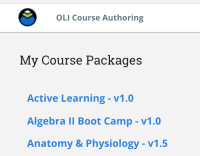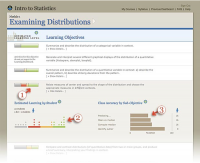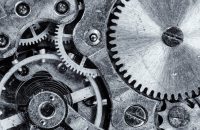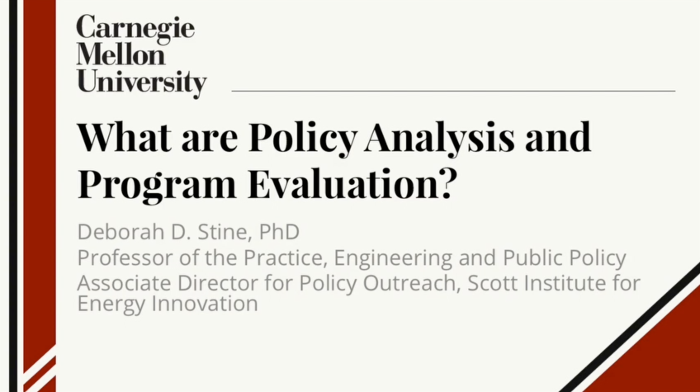Strengthen your EBM skills and critical mindset to improve the quality of your decisions.
Evidence-Based Management — Certified Course
$149
- Description
- Additional information
- What students will learn
- Learning objectives by module
- Course assessments, activities, and outline
- Other course details
- System requirements
- Included instructor tools
Description
The basic premise behind evidence-based management (EBM) is that good decisions require both critical thinking and use of “best available evidence.” This “evidence” may come from scientific research, but good internal business information and mindful professional experience also constitute “evidence.” All practitioners use evidence in their decisions, but most pay little attention to the quality of the evidence and base their decisions on too few sources of evidence. The result is business decisions based on fads, so-called “cutting edge” solutions, and the pop concepts promoted by consulting firms and management gurus. The bottom line is bad decisions, poor outcomes, and no understanding of why things go wrong. EBM evolved in response to this problem with its goal of improving the quality of decision making by using critically evaluated evidence from multiple sources – organizational data, professional expertise, stakeholder values, and the scientific literature.
Although EBM sounds straightforward, gathering, understanding and applying evidence requires a particular set of skills and practical knowledge. These certified course modules will develop your evidence-based skills and enhance your understanding of how an evidence-based approach can support your organization’s decision-making.
How to get access as a student?
CEBMa members
You can get access to the course by signing up as a professional member of The Center for Evidence Based Management (CEBMa). You can find more information about becoming a CEBMa member here. After successfully completing all 15 modules you will receive an official CEBMa/OLI/CMU certificate of completion.
How to get access as a teacher/lecturer?
The modules are developed by CEBMa and are part of a larger certified master course. If you are a teacher/lecturer and would like to use these (or additional) modules in your class, please contact CEBMa.
Additional information
| Version | STUDENT VERSION (self-paced for certificate of completion; no teacher), INSTRUCTOR VERSION (for use with your students; contact CEBMa for details) |
|---|
What students will learn
Module 1: The Basic Principles of Evidence-Based Management
Summarize the basic principles of evidence-based management; Explain why we need evidence-based management; Explain what counts as evidence; Determine which sources of evidence were consulted; Assess (coarsely and in general terms) the quality of evidence; Determine whether the ‘best available’ evidence was used in a decision-making process; Correct common misconceptions about evidence-based management.
Module 2: ASK Critical Questions about Problems and Solutions
Identify (hidden) claims/assumptions regarding a practical issue; Determine whether an (assumed) problem is sufficiently clear; Determining whether there is sufficient evidence to support the (assumed) problem; Determine whether the preferred solution is sufficiently clear; Determine whether there is sufficient evidence (from multiple sources) to support the preferred solution.
Module 3: ACQUIRE – Evidence from Practitioners
Determine what evidence to acquire from practitioners; Determine how to prevent selection bias when acquiring evidence from practitioners; Determine the best method(s) to acquire evidence from practitioners; Determine whether bias could have affected evidence from practitioners; Formulate clear, unambiguous, and unbiased questions.
Module 4: APPRAISE – Evidence from Practitioners
Assess whether professional experience is valid and reliable; Grade the trustworthiness of professional experience; Recognize how system 1 thinking influences valid and reliable professional expertise; Determine whether a decision is based on system 1 or system 2 thinking; Recognize common cognitive biases; Identify ways cognitive biases can be overcome; Critically appraise evidence from practitioners.
Module 5: ACQUIRE – Evidence from the Scientific Literature
Determine the most relevant online research database(s) given the question; Determine whether a journal is peer reviewed; Determine the most important PICOC terms; Search the Internet for relevant alternative and/or related terms; Search Google Scholar for related or broader academic terms; Test search terms to identify terms that yield the most relevant results; Apply Boolean operators to specify a search query; Use the history function to combine search queries; Apply methodological filters to identify meta-analyses and/or longitudinal/controlled studies; Narrowing search results by adding additional PICOC terms; Limit a search result by limiting the date range.
Module 6: A Short Introduction to Science
Assess whether a study was conducted according to the scientific method; Recognize pseudo-science; Assess whether a statistically significant finding is of practical relevance; Assess whether methodological bias may have affected the results; Determine whether confounders may have affected the results; Assess whether a placebo effect may have affected the results; Identify moderators or mediators that may have affected the results; Distinguish quantitative research methods from qualitative research methods; Determine a study’s research design; Efficiently read a research paper.
Module 7: APPRAISE – Evidence from the Scientific Literature
Assess the impact of an effect size; Assess whether a statistically significant finding is of practical relevance; Assess whether a confidence interval is sufficiently narrow; Assess whether an outcome was measured in a reliable way; Distinguish cause-and-effect questions from non-effect questions; Determine a study’s research design; Assessing whether a study’s research design is appropriate given the research question (methodological appropriateness); Assessing a study’s methodological quality; Grading a study’s trustworthiness on the basis of it’s methodological appropriateness and quality; Summarizing a study’s main findings, weaknesses, and overall trustworthiness.
Module 8: ACQUIRE – Evidence from the Organization (beta)
Module description coming soon.
Module 9: APPRAISE – Evidence from the Organization
Determine whether a logic model was used to collect and analyze evidence from the organization; Assess whether organizational data are relevant; Identify steps in the collection and processing of data that could introduce risk of inaccurate data; Determine whether contextual information is missing; Determine whether there could be measurement error; Assess whether there could be a small number problem; Determine whether a metric is a good representation of the data; Interpret a metric’s standard deviation; Assess whether a graph represents the data in a valid and reliable way; Interpret a correlation or regression coefficient; Determine whether a correlation- or regression coefficient is practically relevant; Assess whether there are outliers that may distort the evidence; Assessing whether range restriction may have affected the evidence; Assess whether a confidence interval is sufficiently narrow.
Module 10 & 11: ACQUIRE/ APPRAISE – Evidence From Stakeholders (beta)
Module descriptions coming soon.
Module 12: AGGREGATE: Weigh and Pull Together the Evidence
Explaining what proof, evidence, chance, and ‘conditional’ probability means; Assessing the impact of a prior probability; Estimating the likelihood of the evidence: P(E|Htrue) and P(E|Hfalse); Updating the probability of a claim/assumption/hypothesis when new evidence comes available; Aggregating evidence from multiple sources by applying Bayes Rule.
Module 13: APPLY: Incorporate Evidence into your Decision
Use the PICOC method to determine whether the evidence applies to the organizational context; Determine whether a decision/intervention gives you the biggest bang for your buck; Assess the level of risk inherent in a decision/intervention; Identify ethical issues that need to be considered; Determine whether (and if so, how) the evidence is actionable; Determine whether there are moderators that need to be taken into account; Determine, given the type of decision at hand, how and in what form the evidence can be applied.
Module 14: ASSESS: Evaluate the Outcome of the Decision
Identify the type of decision (to be) made (routine, non-routine, or novel/hyper complex); Determine whether a decision was executed as planned; Assess an outcome using the gold standard method; Assessing an outcome using quasi- or non-experimental methods; Suggest ways to improve the validity and reliability of an outcome assessment; Assess whether an outcome was measured in a reliable way; Assess whether indirect and intangible costs were taken into account; Assess the (unintended) consequences of a decision on stakeholders.
Module 15: Building The Capacity For Evidence-Based Management (beta)
Module description coming soon.
Learning objectives by module
|
Chapter 1: The Basic Principles |
|
|
Chapter 2: Ask |
|
|
Chapter 3: ACQUIRE – evidence from practitioners |
|
|
Chapter 4: APPRAISE – evidence from practitioners |
|
|
Chapter 5: ACQUIRE – scientific evidence |
|
|
Chapter 6: A short introduction to science |
|
|
Chapter 7: APPRAISE – scientific evidence |
|
|
Chapter 8: ACQUIRE – organizational evidence |
|
|
Chapter 9: APPRAISE – organizational evidence |
|
|
Chapter 10: ACQUIRE – stakeholder evidence |
|
|
Chapter 11: APPRAISE – stakeholder evidence |
|
|
Chapter 12: AGGREGATE |
|
|
Chapter 13: APPLY |
|
|
Chapter 14: ASSESS |
|
|
Chapter 15: Building EBMgt capacity in your organization |
|
Course assessments, activities, and outline
Evidence-Based Management: Certified Course Modules
Module 1: The Basic Principles Of Evidence-Based Management
Quiz: EBMgt Assessment Quiz 01: The Basic Principles
Module 2: ASK – Critical Questions About Assumed Problems And Preferred Solutions
Quiz: EBMgt Assessment Quiz 02: Asking Critical Questions
Module 3: ACQUIRE – Evidence From Practitioners
Quiz: EBMgt Assessment Quiz 03: Acquire – Evidence From Practitioners Quiz
Module 4: APPRAISE – Evidence From Practitioners
Quiz: EBMgt Assessment Quiz 04: Appraise – Evidence From Practitioners
Module 5: ACQUIRE – Evidence From The Scientific Literature
Quiz: EBMgt Assessment Quiz 05: Acquire – Evidence From The Scientific Literature
Module 6: A Short Introduction To Science
Quiz: EBMgt Assessment Quiz 06: A Short Introduction To Science
Module 7: APPRAISE – Evidence From The Scientific Literature
Quiz: EBMgt Assessment Quiz 07: Appraise – Evidence From The Scientific Literature
Module 8: ACQUIRE – Evidence From The Organization
Quiz: EBMgt Assessment Quiz 08: ACQUIRE Evidence From The Organization
Module 9: APPRAISE – Evidence From The Organization
Quiz: EBMgt Assessment Quiz 09: Appraise – Evidence From The Organization
Module 10: ACQUIRE – Evidence From Stakeholders
Module 11: APPRAISE – Evidence From Stakeholders
Quiz: EBMgt Assessment Quiz 10 & 11: ACQUIRE & APPRAISE Evidence From Stakeholders
Module 12: AGGREGATE – Weighing And Pulling Together The Evidence
Quiz: EBMgt Assessment Quiz 12: Aggregate – Weighing And Pulling Together The Evidence
Module 13: APPLY – Incorporating The Evidence Into The Decision-Making Process
Quiz: EBMgt Assessment Quiz 13: APPLY: Incorporate the Evidence into the Decision-Making Process
Module 14: ASSESS – Evaluate The Outcome Of The Decision Taken
Quiz: EBMgt Assessment Quiz 14: ASSESS – Evaluate The Outcome Of The Decision Taken
Module 15: Building The Capacity For Evidence-Based Management (beta)
Other course details
System requirements
OLI system requirements, regardless of course:
- internet access
- an operating system that supports the latest browser update
- the latest browser update (Chrome recommended; Firefox, Safari supported; Edge and Internet Explorer are supported but not recommended)
- pop-ups enabled
- cookies enabled
Some courses include exercises with exceptions to these requirements, such as technology that cannot be used on mobile devices.
This course’s system requirements:
- A full desktop operating system, such as Windows or Mac OS X.
Included instructor tools
Instructors who teach with OLI courses benefit from a suite of free tools, technologies, and pedagogical approaches. Together they equip teachers with insights into real-time student learning states; they provide more effective instruction in less time; and they’ve been proven to boost student success.








